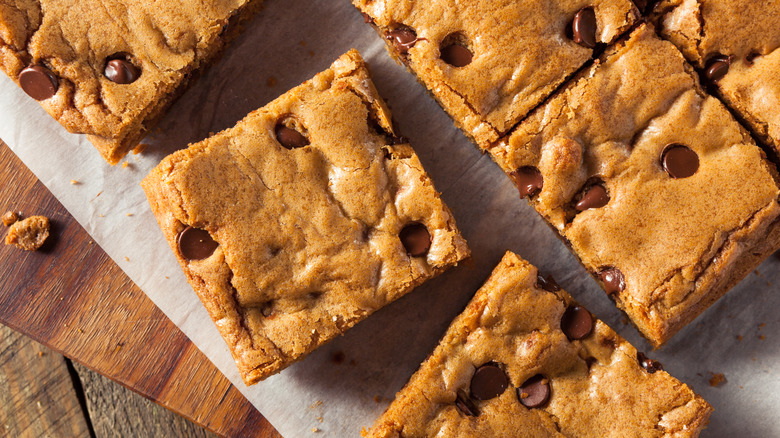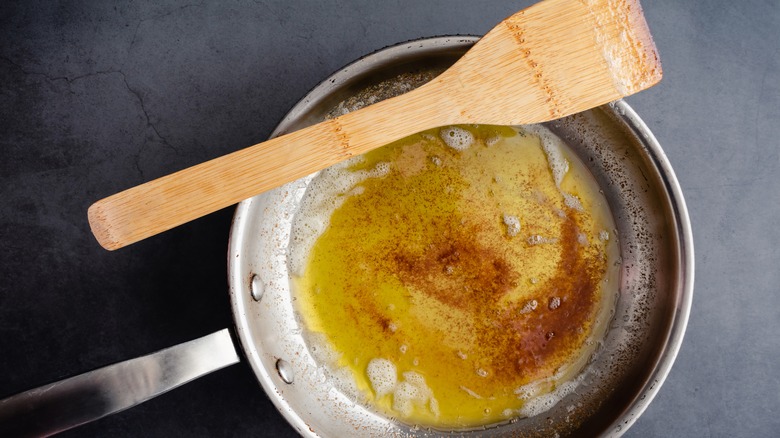Why It's Absolutely Crucial To Use Melted Butter In Blondies
When it comes to blondies, it's all about the butter. A truly delicious blondie recipe is judged primarily by its gooey, dense texture and buttery flavor. While you'll find plenty of recipes for its close relative, the brownie, which aims for a light and fluffy, cake-like consistency, the same can't be said about blondies. Cake-like blondies technically do exist, but they're usually the result of a crucial misstep rather than an intentionally sought-after texture. The misstep in question has everything to do with the preparation of the all-important butter. When adding butter to your blondie batter, melting it first is an absolute must.
Butter is partially made up of water, and when its water interacts with flour during the mixing process, it causes gluten to develop. This interaction encourages the dense and chewy texture that makes blondies stand out. Melted butter, specifically, helps facilitate this process because the water from the butter is easily accessible. Its contribution doesn't stop there though.
While many cookie recipes call for creaming together room-temperature butter and sugar to create a batter that's full of air pockets, you want the exact opposite effect when making dense recipes like blondies. To achieve this, you'll need to start with a base that can't collect nearly as much air. When melted, butter is much heavier than in its solid form so it's able to impart all of the delicious flavor without any of the fluffiness.
Melt your butter on the stovetop, then brown it
If you've ever tried melting butter in the microwave, you've likely experienced its tendency to pop and splatter around the inside. Instead of throwing it in a bowl and hoping for the best, try melting the butter for your blondies in a small saucepan over medium heat. Not only will this allow you to control the temperature, but it also gives you an easy path toward taking your blondies to the next level by adding brown butter.
When carefully heated, the milk solids in the butter will start to brown, leaving you with nutty smelling, beautifully brown, caramel tasting butter. You can level up any blondie recipe by adding brown butter, and the process for making it is as simple as continuing to heat your butter past melting for about 5-7 minutes, stirring constantly until the butter gets foamy and the liquid underneath starts to turn a light amber color.
Brown butter develops a rich flavor as it cooks, but be sure to keep a close eye on the stovetop when making it. Leaving your butter unattended can quickly produce burnt butter, which will force you to start over. You can, however, push the limits and experiment with different levels of browning to find the richness that best suits your taste preferences. And when you inevitably find yourself craving another batch, be sure to check out our list of the 30 best uses for brown butter for some tasty inspiration.

